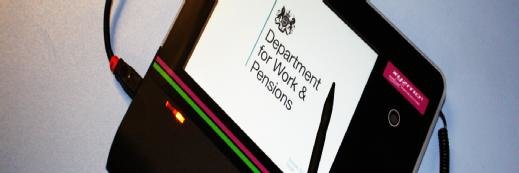Production Perig - stock.adobe.c
CIO interview: Richard Corbridge, CDIO, Leeds Teaching Hospitals
Leeds Teaching Hospitals’ new chief digital and information officer is putting together a plan for smarter use of information
Richard Corbridge, chief digital and information officer (CDIO) at Leeds Teaching Hospitals NHS Trust, is on a mission to improve the way healthcare organisations and their clinicians use data to improve patient care.
“Throughout my career, I’ve tried to suggest that we shouldn’t collect information to count beans, and yet we often do that in healthcare because of the need to monitor costs,” he says.
“We need to get to a position where we collect information to deliver better service to the patient. And by collecting that information, it can then be reused for that bean-counting element and to improve clinical research, too.”
Corbridge is currently formulating a plan to put smarter information use into action at Leeds, having joined the trust in November 2017. With a wealth of healthcare IT leadership experience under his belt, Corbridge says he is bringing digital transformation to Leeds for the benefit of clinicians and patients.
He joined the trust after three years as CIO for the Health Service Executive in Ireland and CEO of eHealth Ireland. Corbridge was previously CIO at the National Institute for Health Research’s Clinical Research Network between 2011 and 2014.
Although Corbridge delivered significant and lasting change in these roles, he saw the opportunity at Leeds Teaching Hospitals as too good to turn down.
“Leeds is very much my home – I wanted to be back in my own city,” he says. “I’ve run national projects across Ireland, the NHS and in clinical research. But I wanted to go on the front line and see what was really happening and how I could help the trust to do something different. It’s a big organisation that provides a big opportunity.”

“We need to get to a position where we collect information to deliver better service to the patient”
Richard Corbridge, Leeds Teaching Hospitals NHS Trust
There are two other reasons why the Leeds job appealed, says Corbridge – methodology and development. “The executive team is keen to make the most of lean across the organisation, and the chief executive, Julian Hartley, has helped push that agenda,” he says. “The opportunity to be part of an approach that delivers lean and digital in combination is really exciting.”
When it comes to openings in development, Leeds has spent a decade building its own electronic health record (EHR) system. Corbridge relished the opportunity to join a trust that has an IT function which builds, runs and continues to evolve its own EHR system. Only two other trusts in the UK have their own bespoke-developed EHR systems.
“The idea of working with clinicians to help change that system on a month-by-month basis to deliver what they need, rather than just using another commercial application used by hundreds of other organisations, is also really exciting,” he says.
Clinician engagement high
Corbridge says the decision to stick with the pre-existing EHR system stems from two things. First, clinician engagement is already high at Leeds – clinicians know how to make demands of their technology systems, and IT professionals in the trust know how to respond quickly.
Corbridge gives the example of creating an application for flu reporting over the winter. “This reporting takes place on an hourly basis, so everyone knows where flu is in the hospital, where beds are taken due to flu, and where bays need to be left empty,” he says. “We delivered that application to the clinical desktop in less than a week.”
The second factor prompting the decision to stay with the current EHR system is around how healthcare will be delivered at the trust in the future. Corbridge says any organisation that buys a commercial EHR system could find its IT team spending up to two years configuring the platform to meet the hospital’s daily operational demands.
“Applications need to be taken apart first – and that reduces the potential impact of technology on the work of clinicians,” he says. “What we’ve adopted instead is the ‘Leeds Way’. This is a set of principles that govern how we deliver healthcare culturally. And our EHR system fits with this approach. It’s really important that we don’t break the way healthcare is delivered because of the implementation of IT.”
Backing from the board
So, how is it going so far? Corbridge is extremely pleased with both the progress he has made and the support he has received. “Six months in and I’m really loving it,” he says.
“It’s a great place to be in terms of a team point of view. The board at the trust has really backed the decisions that have been made around digital. One of the first tasks for me to evaluate was whether it was right to continue using the bespoke EHR system, rather than a commercial off-the-shelf product.”
Corbridge went to the board late last year and it backed the decision not to revisit the choice for at least three years. “That means we’ve got time to build on the existing EHR platform and to take the trust forward,” he says. “That is hugely exciting in terms of the technology we are already using and the likely direction of travel in the future.”
Development around the trust’s EHR system is not the only area of progress. Corbridge has led the creation of a council of chief clinical information officers (CCIOs) at Leeds. He used a similar approach in Ireland. At Leeds, three senior clinicians cover three core areas of operational activity – health professionals and nursing, clinical and medical, and academic and innovation.
“We have taken the three pillars of where we need to go in terms of a clinical engagement point of view and we’ve applied leadership to those areas,” he says. “We have empowered clinicians to set the priorities in terms of what’s going to be done in digital transformation going forward.”
Deliverable digital service
With the three-year status of the EHR system guaranteed, Corbridge says his focus now is on building a team that can work to ensure everything the clinicians need at the trust can be turned into a deliverable digital service. The underlying aim is system consolidation – the trust’s 16,000 employees currently use more than 460 IT systems.
“It just feels unnecessary to have that many applications,” says Corbridge. “There are obviously a lot of clinical systems for special tasks, but that also represents an awful lot of systems to integrate and manage. So, we want to reduce the number of applications, support the clinicians’ requirements and ensure the Leeds Care Record [LCR] continues to grow.”
This joined-up digital care record runs across the city’s 350 GP practices. The LCR, which has been put in place over the past seven years, allows GPs across the region to see information about conditions and requirements when a patient is in hospital. GPs can interact with the LCR, provide advice and create care packages for other family members.
“The record allows the sharing of information. As simple as it sounds, it’s actually quite unusual as a healthcare system,” says Corbridge. “There aren’t that many places that provide a similar level of integration. It’s a real tool for good for the people of Leeds, and it’s something we’re looking to push as far as we can.”
Funding is a barrier
Corbridge recognises that meeting his broad objective of pushing smarter information use in healthcare remains far from straightforward. Cash constraints present a considerable obstacle to the executive team’s plans. “Funding is always a barrier in healthcare technology,” he says.
“The more-for-less campaign that has run inside the NHS is still going strong. That campaign does present challenges because IT isn’t free. We talk up the potential of digital, but everything we want to do with IT costs money – and we have to continually fight to understand the areas we should prioritise when it comes to technology spending.”
Read more public sector CIO interviews from Computer Weekly
- Estonia’s former CIO on how to make services work for people, why the skills gap shouldn’t be an excuse not to digitise, and the importance of going to the gym.
- Scottish local government’s chief digital officer describes the challenges of driving digital change across the country’s councils.
- The MoJ’s chief digital and information officer is keen on doing his bit to tear down the Whitehall silos, creating collaborative, simple and effective digital services for staff and the public.
Corbridge recognises the size of the funding challenge and sympathises with senior colleagues who have to make difficult calls. “I accept it’s tough for our board, and the NHS more generally, to decide between more beds and nurses, and further investments in technology,” he says.
“It is crucial that we invest the right amounts in the right places to get the right results. One of the other barriers that we have to overcome is the challenge of understanding the role of advanced technology, such as the impact of artificial intelligence, the application of machine learning to healthcare records and the use of entrepreneurial innovation.”
Making use of that creativity is particularly tough in an environment dominated by cumbersome procurement policies, but Corbridge says some progress is being made. He points to a recent partnership between Leeds and specialist startup Forward, which delivers an integrated record and messaging function that Corbridge says is a bit like a dedicated version of WhatsApp for the healthcare community.
“It’s been quite difficult to build that relationship because they are a startup without a million pounds in the bank and without a thousand previous customers,” he says. “The benefit we’ve got from that partnership has been phenomenal and well worth the investment.”
Personal health record
Corbridge says the next big thing on the horizon for patients is the development of a personal health record. That development, he says, is about thinking how the trust takes the information it holds in the Leeds care record system and pushes it into patients’ hands via a dedicated portal.
“We want to give them an access point so they can add to that information as well,” he says. “We want to open information and make sure that the data we hold keeps the quality of patient care moving forward. The boundaries in healthcare between different organisations are traditionally quite rigid.
“I think the approach we have at Leeds gives us the ability to remove those barriers and to share information across systems. By giving patients the opportunity to add to their healthcare records, we start to create much more useful data.”











